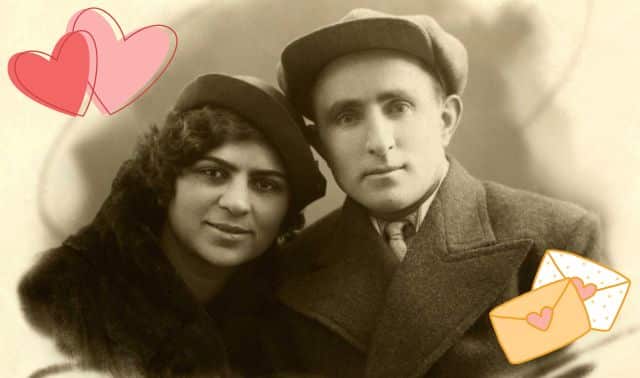Sign up for the Family Tree Newsletter Plus, you’ll receive our 10 Essential Genealogy Research Forms PDF as a special thank you!
Get Your Free Genealogy Forms
"*" indicates required fields
1. Turn blog posts into books.
Blogging is a popular and free way to share your family history. It can ensure that the details of your ancestors’ lives get fleshed out beyond the names, dates, places and source citations you’ve collected – and get remembered. A blog also can serve as “cousin bait” to attract the attention of long-lost relatives researching the same ancestors you are. If you already have a blog (or if you want to start one), you can write and post family history information throughout the year, and then compile the posts into a printed book at least once a year.
2. Make a movie.
“Show, don’t tell” is a mantra commonly taught in writing classes, where students learn to enrich their prose with descriptive details. But sometimes words just aren’t good enough. Photos and video may tell the family story best. If you have family movies or old videos, you can use technology to transfer them to your computer (see our guide to digitizing old home movies). While plenty of software programs help you create and edit video, many are pricey. Your most cost-effective and easiest option may be the built-in software that comes with your computer. For instance, most Windows-based computers already include Windows Movie Maker. If you don’t have it, download it free from Microsoft Windows.Microsoft.com or Explore.Live.com. Mac users can create beautiful HD family history movies with iMovie ($14.99) Apple.com.
3. Cook up some culinary history.
Many researchers focus so much on the data-gathering portion of genealogy that they forget to record things such as ethnic customs and traditions or Grandma’s best bread pudding recipe. A family cookbook is something you can share across the generations, knowing that delicious food has broad appeal. A cookbook is easier to put together than you may think with self-publishing services such as Lulu or Amazon.com’s CreateSpace. I published my book Baba’s Kitchen: Slovak & Rusyn Family Recipes & Traditions on Lulu, using its templates for both print-on-demand and eBook versions. You’ll also find recipe book templates pinned on Pinterest. If using a template and a service sounds too complicated, just put your recipes and any photos in a word processing document you can print at home.
4. Get interactive.
Perhaps your relatives would be more interested in the family history if they could easily contribute their own memories and information to the tree or narrative. Apps and tools for collaboration and storytelling are abundant. For example, EveryStory is a simple, free storytelling app (Android, iOS) that makes it easy for people to record, save and share their stories in a private sharing environment. The free Saving Memories Forever smartphone app (Android, iOS) provides family interview question prompts and allows you to easily record and share relatives’ memories in audio format.
5. Create a family history coloring book.
Coloring books are no longer just for kids. In July 2015, The New Yorker magazine ran an article on the phenomenon of adults turning to coloring books as a popular creative outlet and stress reliever. Many bookstores now sell coloring books and fancy colored pencils for adults. You can capitalize on this trend by making your own book that combines your genealogy and coloring.
6. Capture and share current family moments.
Genealogists spend most of their time chasing dead ancestors, but family history is happening all the time and the moments of today will become tomorrow’s past. In the age of YouTube and selfie sticks, everyday activities are being recorded and shared like never before. New apps are always rolling out to help us share life’s moments as they occur.
7. Decorate with family history.
Put your family history front-and-center in your home to spark conversation when family members visit. Hang photos throughout your home to tell your ancestors’ story, or pay tribute to them with a wall of photos. I’ve used the Wallverbs family tree photo frame display from Bed, Bath & Beyond to create various ancestor collages in different rooms of my house. You also could have old family photos (or a combination of photos and document images) printed on canvas or metal to create wall displays. Photo-printing sites such as Snapfish, Shutterfly, Mixbook, Mpix and CanvasPop offer several wall-art options for printing individual photos or photo collages.
8. Create a family history cover photo.
Social media sites such as Facebook and Twitter recommend using cover or header photos in addition to a profile picture. This is another opportunity to honor or showcase your ancestors. If you’re skilled with photo editing, you can create your own images for Twitter and for Facebook.
Toolkit
- 5 Things You Should Know About Periscope
- 7 Tips for Turning Your Blog Into a Book
- Amazon.com’s CreateSpace
- Blog2Print
- Blurb
- DIY Pillows Made from Daddy’s Shirts
- EveryStory
- HistoryLines
- Lulu
- No Story Too Small blog
- Periscope
- Pinterest: Cookbook Template
- Treelines
- Two Companies That Will Print Your Genealogy Blog Books
Books
- 101 Tips for a Fabulous Family Reunion e-Book by Family Tree Magazine (Family Tree Books)
- From the Family Kitchen: Discover Your Food Heritage and Preserve Favorite Recipes by Gena Philibert-Ortega (Family Tree Books)
- How to Archive Family Keepsakes by Denise May Levenick (Family Tree Books)
- How to Archive Family Photos by Denise May Levenick (Family Tree Books)
More Online
Free Web Content
16 ways to leave a legacy
Family story short takes
Family history storytelling sites
For Plus Members
Digitizing old home movies
Make a family movie in 11 steps
Tutorial: Tell your family story with Treelines
Family Tree Shop
Family Tree Chart: Watercolor Design download
10 Genealogy Tech Tools You Can’t Live Without on-demand webinar
ADVERTISEMENT




